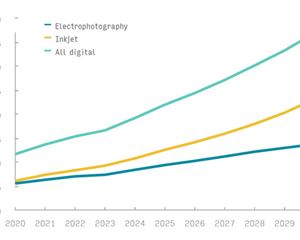Food packaging has come of age. The industry has seen rapid, progressive changes over the last few years. It has also undergone far-reaching perceptional changes. From being primarily viewed as mere storage products, today, packaging is considered as the fifth P of marketing.
Earlier, the key function of food packaging material was to shield packaged food from getting damaged during the transportation process as well as safeguarding it from climatic conditions during its shelf life. Later, the packaging industry started focusing on the look of packaging materials; and thus, started developing eye-catching packaging designs that purely looked at attracting the consumers. On the other hand, today, one of the crucial functions of food packaging is to ensure that the packaged food’s original quality and nutritional value is well-preserved till its expiry date or until the pack is opened.
The 21st century has seen changes with respect to the consumption patterns of consumers mainly due to the rapid urbanisation and pace, rising population, and the growing purchasing power of consumers. These factors have led to consumers progressively relying on convenient, ready-to-eat food products.
The food packaging industry has seen a perceptible shift towards flexible packaging materials;simply because flexible packages are durable, lightweight—hence, reduce transportation costs—and occupy less space as compared to the other packaging products. Flexible packaging is a non-rigid method of packaging, and flexible packaging products are made from flexible materials such as plastic, aluminum, and paper. These materials undergo a detailed conversion process such as printing, lamination, coating, and extrusion.
Food packaging is as crucial as the ingredients of the packaged food; thus, it needs to be given the same level of importance as food ingredients.The reason for this is that the packaging material is in constant contact with the packaged food. Protecting consumer health and maintaining the highest possible level of food safety should become a consolidated vision of the entire value chain of packaged food industry.
The global packaging industry is expected to grow to USD 820 billion by 2016. Moreover, interestingly the Indian packaging industry, which is growing at an approximate rate of 15% annually, is also projected to become the fourth-largest packaging market in the world by 2016, with revenues of USD 43.7 billion.
Additionally, over the next five years the flexible packaging market in India is estimated to grow at a compounded annual growth rate of 15-16% as per the market research reports. Considering that the growth and fast changing dynamics of the flexible packaging industry, there is an imminent need to scale up the knowledge levels of all the value chain participants to international standards through relevant capability building and best practice sharing platforms.
Today, stakeholders including brand owners, regulatory authorities and the end-consumers are giving ‘packaging’ a prominent position on their food processing quality checklist. While flexible packaging holds substantial prospects for existing and emerging enterprises, innovation and collaborative effort is the need of the hour. This will ensure delivery of best quality products as well as help to create a strong partnership among the packaged food industry’s supply chain participants.
S Sunil Kumar is the business director, industrial adhesives, Henkel India.












 See All
See All